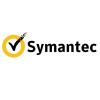

It’s easy to forget about members of the team who aren’t members of the organization. It’s no wonder that the partner enablement process sometimes falls between the cracks. Branded presentation templates, in-person training, courses, sales collateral, and even software often aren’t available to partner sellers. Sales and marketing leaders don’t know or understand partners’ abilities and lack confidence in the external sales experience. In most cases, these indirect sellers don’t get the same backing as in-house sales teams. Despite these results, partners still often lack support. Partners with the right tools see faster deals, higher lifetime customer value, higher-order values, and significantly higher growth rates. Studies have found that for many B2B companies, partners account for nearly half of total sales. Why Invest in Channel Partner Enablement?


Primarily, this involves providing training and creating marketing and sales material, but you also need strong communications to ensure that your goals align. That means making sure that they appropriately represent your brand, can close sales, and are motivated to tell their customers about your product. Your partner enablement framework is the way you give these external partners the resources they need to play an active role on your sales team. They may be distributors or retailers, or service providers who include the product as part of a package. Partners, or channel partners, are companies that team up with a producer to sell the producer’s products or technology. By giving vendors and sales partners the tools and incentives to sell your product, you can increase sales using resources that are already at your fingertips. However, for a lot of software companies, it can have impressive ROI. When looking to increase sales, partner enablement is a tool that often gets overlooked.


 0 kommentar(er)
0 kommentar(er)
